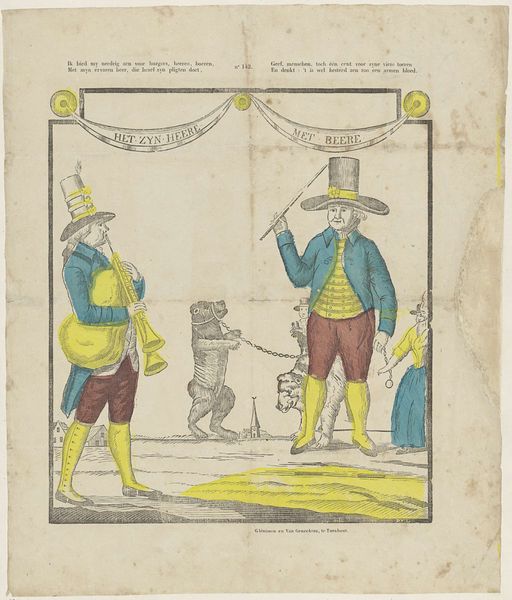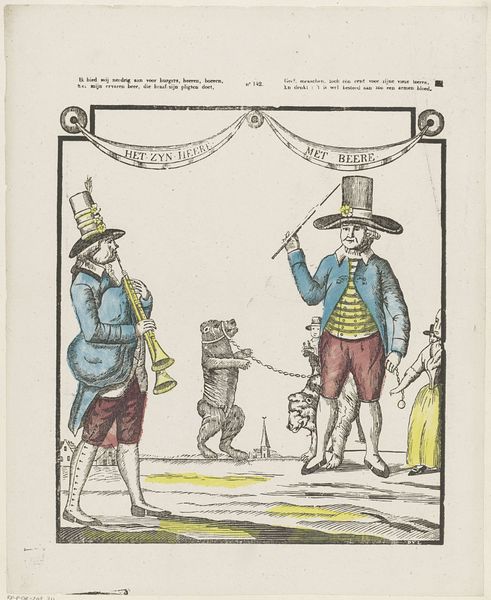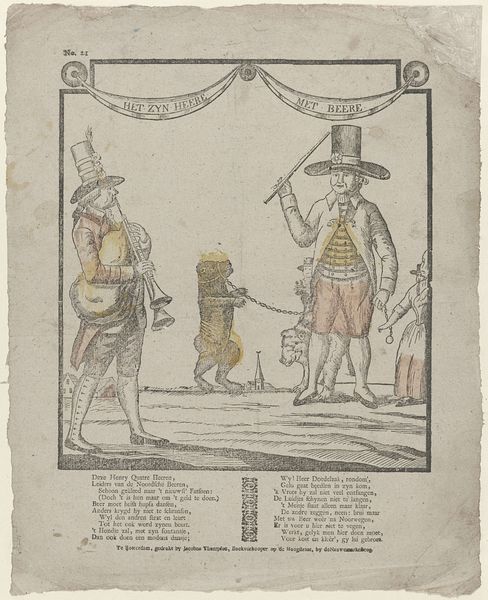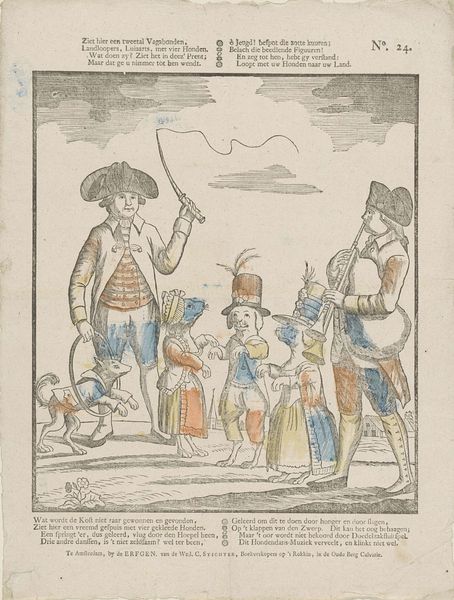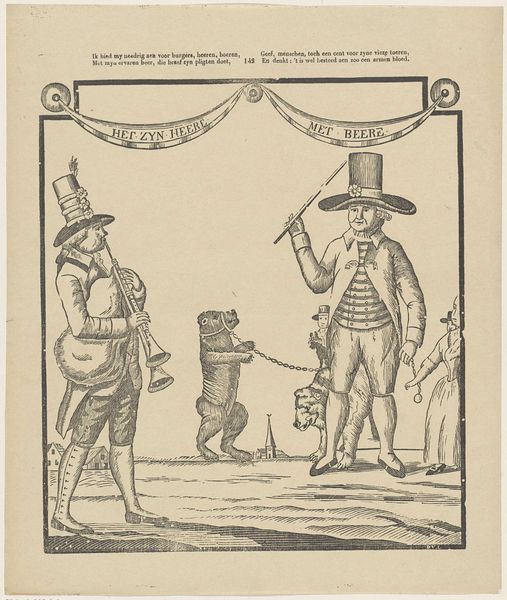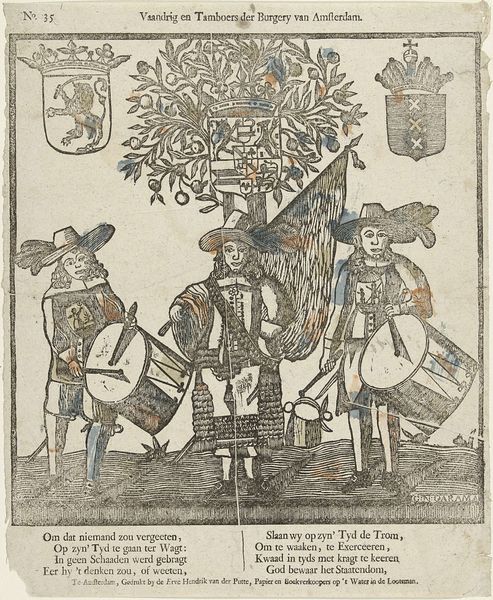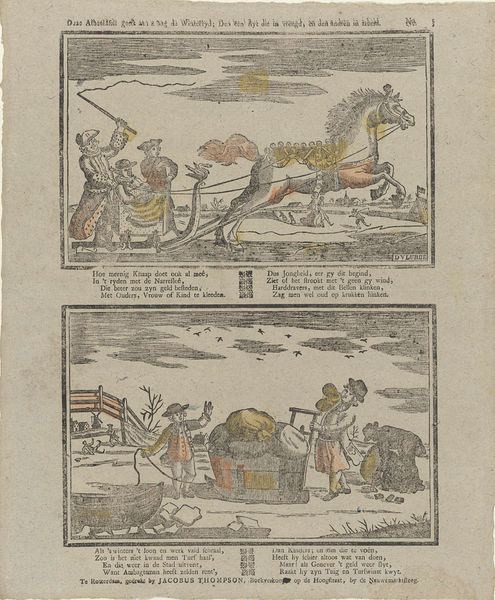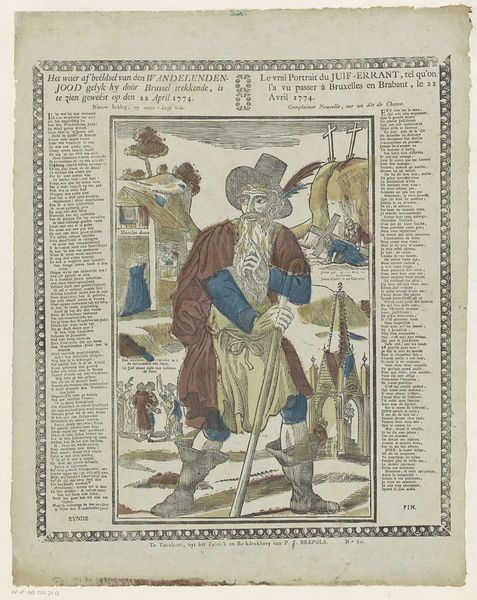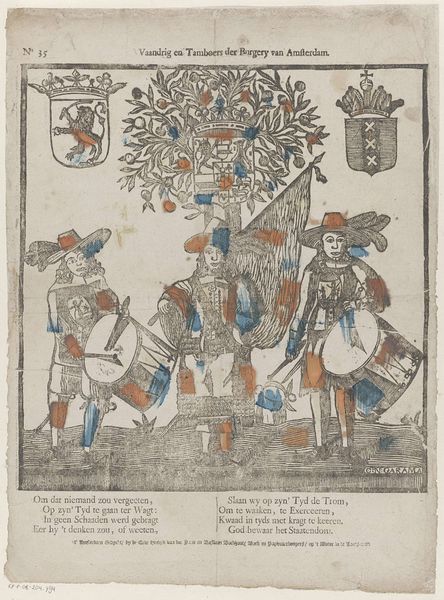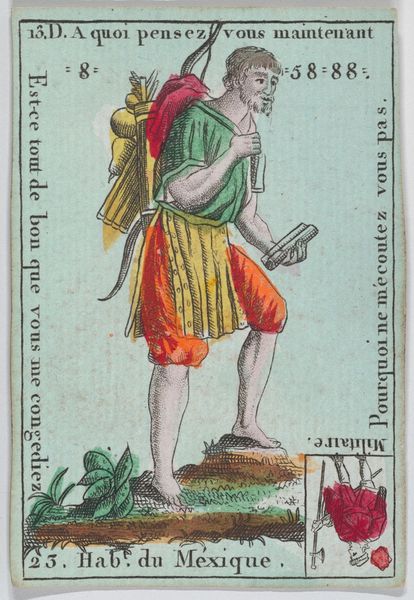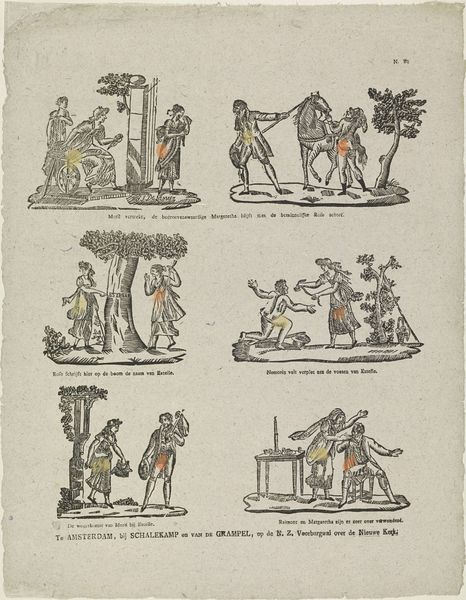
Ik bied my needrig aen voor burgers, heeren, boeren, / met myn ervaren beer, die braef zyn pligten doet, / Geef menschen. toch één cent voor zyne vieze toeren / En denkt : 't is wel besteed aen zoo een armen bloed 1833 - 1900
0:00
0:00
dirkvanlubeek
Rijksmuseum
#
comic strip sketch
#
quirky illustration
#
cartoon like
# print
#
caricature
#
cartoon sketch
#
personal sketchbook
#
sketchbook drawing
#
genre-painting
#
cartoon style
#
storyboard and sketchbook work
#
cartoon carciture
#
sketchbook art
Dimensions: height 365 mm, width 311 mm
Copyright: Rijks Museum: Open Domain
Editor: So, this is a print titled "Ik bied my needrig aen voor burgers, heeren, boeren, / met myn ervaren beer, die braef zyn pligten doet, / Geef menschen. toch één cent voor zyne vieze toeren / En denkt : 't is wel besteed aen zoo een armen bloed" by Dirk van Lubeek, dating from between 1833 and 1900. The almost cartoonish style and vibrant yet limited palette are quite striking. What's your take on this? Curator: As a materialist, what immediately grabs my attention are the production processes implied. This is a print, likely a woodcut or engraving, meaning a level of labor and skill went into creating the matrix from which it was made. This wasn't a unique, singular creation in the way we understand painting. It was inherently reproducible, made for wider circulation and consumption. What was the context for such an image to be made? Editor: Well, judging by the caption it seems to depict street performers soliciting money for their act involving a bear. Curator: Exactly! So, consider the materials – the paper, the ink. Cheap, readily available. And who would buy this? Likely not wealthy patrons of the "high arts," but a popular audience consuming readily available, inexpensive imagery reflecting everyday life. The image isn't just "of" working-class entertainment, but a product of its very economy and values. This wasn't just "art," it was a commodity circulated among common people. The artist also had a kind of business relationship to this social environment of beggars and "low life", that might be good or bad in relation to moral categories, so how should we consider that? Editor: So you’re saying the image’s very materiality and method of production are key to understanding its meaning, not just what it depicts? Curator: Precisely. By examining its materials and imagining its journey through production, distribution, and consumption, we understand its integral connection to the broader social and economic fabric of its time. Editor: I see that now, examining the print's place within a wider commercial system changes how I viewed the artwork, and its relation to society. Curator: Indeed, it reveals the social relations embedded within its creation and circulation.
Comments
No comments
Be the first to comment and join the conversation on the ultimate creative platform.
